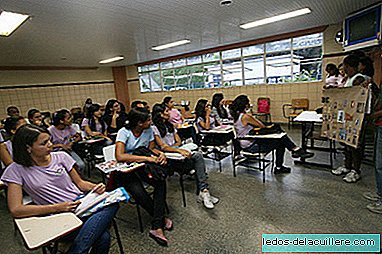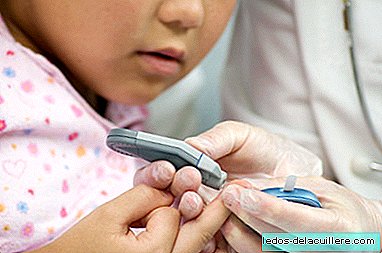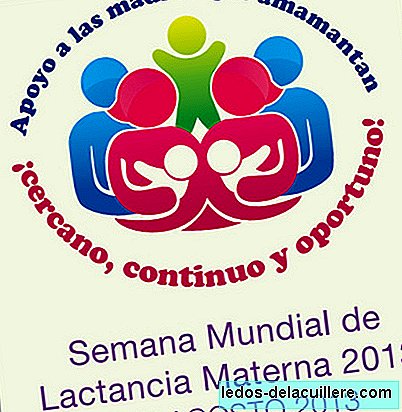
As you know, the results of the PISA tests conducted in 2012 among 15-year-old students (fourth year of the ESO) have been presented, and the main conclusion is that Spain's educational performance in mathematics, reading and science remains just below the OECD average, and even below the average of the European Union.
The International Student Assessment Program (PISA) is a three-year study that assesses the extent to which 15-year-old students at the end of compulsory education have acquired the knowledge and skills necessary for full participation In modern society. The assessment does not only measure if students can reproduce the knowledge acquired, It also examines whether students are able to use what they have learned and apply it in unfamiliar contexts., both inside and outside the school.
This reflects the fact that modern economies reward individuals not for what they know, but for what they can do with what they know (learn to know, learn to do ... do you remember the four pillars of education?) .  PISA 2012: mathematical results
PISA 2012: mathematical results
Following the presentation of the report, it was also detected that equity in educational outcomes has worsened during the mentioned period (2003/20012), since students with a favored socio-economic level outperform the less favored students, which is not surprising in an educational system in which public, concerted and private schools live, maintaining the 'unreal' message of equality.
According to the document 'the higher the value of the ESCS index (socio-economic and cultural situation of families), better results; although that rule is not always fulfilled in all countries. ' For example the level of Spanish students in Mathematics It is close to expected depending on your ESCS.
Average performance of Spanish students
But according to PISA 2012, 'if the 15-year-old students of 2003 had the same social and demographic characteristics as those who passed the tests last year, they would probably have obtained better results', which points to other factors that influence the results - in addition to the socio-economic situation -. It points to unexcused truancy, although surely if we search we find other causes attributable to both students and internal elements of our education system: for example it occurs to me that although investment increases, the percentage of GDP is lower than in other countries; or the lack of positive and motivating climates for learning.
In Spain, the difference between communities with better and worse educational performance is 55 points, the equivalent of 16 months of schooling, but these variations are small when compared with the total variation in performance among OECD students.
More than 85% of the differences between communities are attributable to socio-economic differences, much more than in any other OECD country with available data
Not everything is bad news because of the 14 autonomous communities evaluated with their own sample, there are seven that exceed the OECD average in Mathematics. They are Navarra, Castilla y León, Basque Country, Madrid, La Rioja, Asturias and Aragón. Some of them get more score, for example, than countries like Germany or Belgium. On the other hand, there are Communities such as Valencian that do not participate in the Report, claiming that they already submit to their own external evaluation tests.
The OECD countries that are leading the way in terms of results, we find South Korea, Japan and Switzerland. The Netherlands appears as the first EU country, followed by Estonia and Finland
United Kingdom is average, ahead of Iceland, Latvia, Luxembourg, Norway, Portugal, Italy, Spain, Russia, Slovakia and the USA.
Differences between boys and girls
In 2003 the Spanish boys got on average 9 points more than the girls and in 2012 they obtained on average 16 points more than the girls. This is one of the biggest increases observed in the difference between boys and girls between all countries for which there are data from 2003 and 2012
Girls get an average of 29 points more than boys in reading, a difference below the OECD average (38 points). The difference between boys and girls has remained stable since 2000.
In 2012, boys obtained better results than girls in science, by a margin of 7 points, while in 2006 both groups obtained similar results.
 PISA 2012: reading results
PISA 2012: reading resultsHow are the PISA tests?
If you want to know what the evaluation procedure has been, the tests used in the evaluation they were in paper and pencil format and each student had two hours to answer it. In some countries, an additional 40 minutes were added to evaluate math, reading and problem solving by computer.
Each test was a combination of multiple choice questions and questions that required students to develop their own answers. The questions were organized into groups that followed a short text that presented a real situation.
In addition to the cognitive test itself, the students they had to answer a questionnaire in which they were asked questions about themselves, about their homes and their learning experiences. It took 30 minutes to complete this questionnaire.
The directors of each school also answered a 30-minute questionnaire about the characteristics of the school and the learning environment. In some countries and economies, optional questionnaires were given to parents.
Satisfaction is also necessary

The students 'commitment to the center, the belief that they can perform at a high level, and their ability and willingness to do everything necessary to achieve their goals not only play a fundamental role in configuring the students' skills in order to master academic subjects but that They are also valuable attributes that will allow them to lead full lives, overcome challenges and take advantage of the opportunities presented to them.. In other words, students - and adults - need many more things besides cognitive skills.
For the first time, PISA 2012 asked students to evaluate if they were happy in their school, your level of satisfaction with it, and that will reflect if your school environment is close to your ideal. Since the educational center is a - if not the - basic social environment for 15-year-old boys and girls, these subjective assessments provide a good indicator of whether educational systems are capable of fostering or hindering the overall well-being of the student.
Approximately 87% of students in Spain declared being happy in your school, compared to the OECD average, of around 80%. In general, Spanish students demonstrate a stronger sense of belonging to their center than students in the OECD group of countries.
However, it seems that unjustified absenteeism is influential in the results since in Spain, students who admitted that they had arrived late to class obtained, on average, 27 points less in mathematics, while those who recognized skipping classes or school days obtained , on average, 35 points less
Positive environment is not the same as motivation among teachers
Generally, a positive learning climate is considered to be a precondition for obtaining better student performance. Therefore, it is important to incorporate the best teachers to the most complicated classrooms and ensure that students from any socio-economic context benefit from a positive learning climate.
In Spain, the directors' perception of how student behavior affects learning It is generally more positive than in the OECD countries as a whole. For example, 20% of students attend centers whose principals believe that abuse or intimidation among students makes learning difficult, compared to 32% on average for OECD countries. In contrast, one in four students in Spain attends centers in which the principal considers that the motivation of teachers is low, compared to the proportion of one in ten students in the OECD.
There is a difference against us (of the Spanish students, I mean) with respect to the OECD average in terms of the perception by the directors who think that the teachers resist the changes, thus making learning difficult. And let us also bear in mind that in Spain, teacher evaluations rarely involve changes in salaries, economic rewards, professional development opportunities, promotion, public recognition or the assumption of new roles in the improvement of the center.
 PISA 2012: science results
PISA 2012: science resultsPISA offers information for educational policy and practice and allows monitoring trends in students' knowledge acquisition in different countries and within different groups in each country. The results allow education policy makers to measure students' knowledge and skills in their countries compared to other countries, set goals against goals that can be measured and that have been achieved by other educational systems and learn from the educational policies, programs and practices implemented in other countries.
I keep learning about the policies, programs and practices of other countries, learn from both positive and negative aspects, and keep in mind that social characteristics, economic, cultural and productive of the different countries are not the same, therefore to introduce changes many factors must be studied, but not precisely those that respond only to the interests of a particular Government, as it seems to happen with our Educational Reforms .
If you want to review the full report with all its graphics, I put you at this address.
Images | Photos GOVBA, National Social Security Administration, Ministry of Education, Culture and Sports More information | Ministry of Education, Culture and Sports in Peques and More | What is the evidence that allows to generate the PISA report of the OECD countries, The abilities of parents to influence school success: interest in children's studies and active involvement, Why Spanish students are placed by under the OECD countries?












